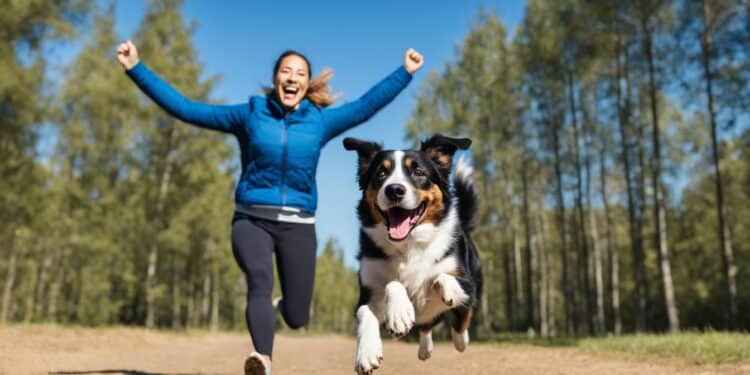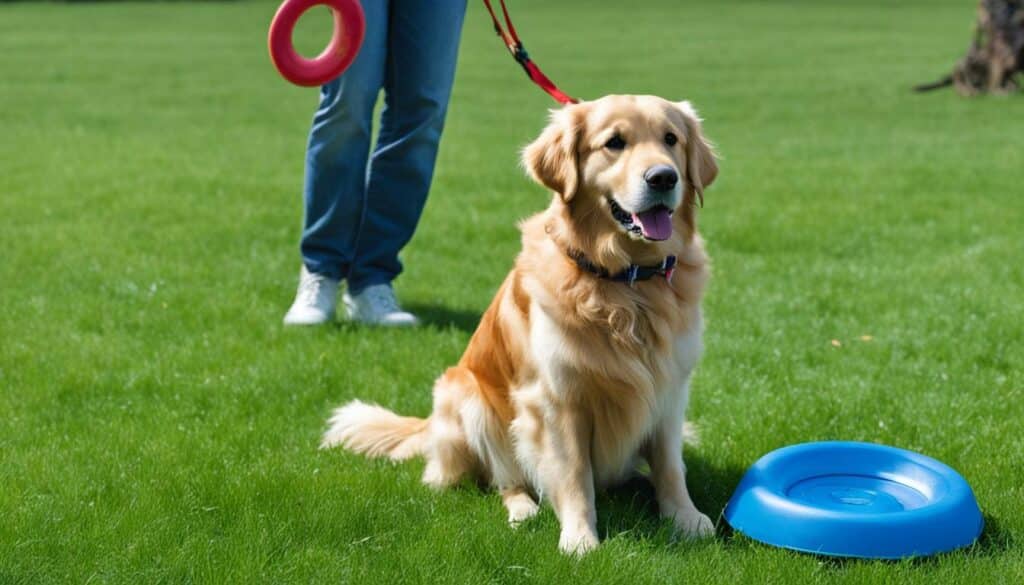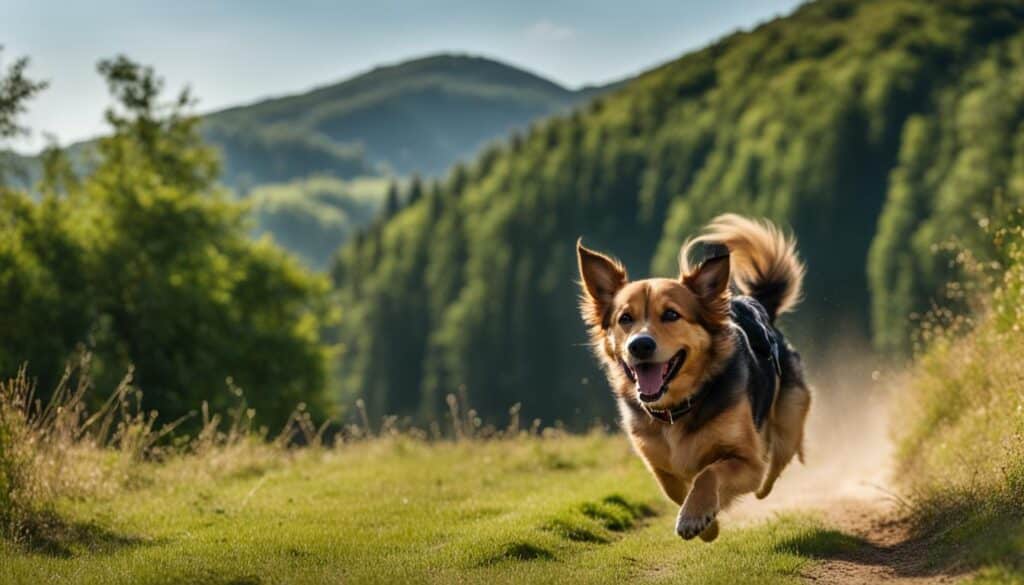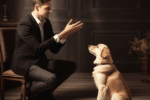Improving Recall Commands: Training Your Dog to Come

Teaching your dog reliable recall commands is crucial for their safety and obedience. The goal is to ensure that when you call your dog to come, they respond promptly and enthusiastically. A reliable recall is especially important for off-leash situations and in emergencies. Training involves making it fun for your dog, using games, and gradually increasing the difficulty and distractions. It’s important to avoid poisoning the recall cue and never punish your dog for coming to you. Regular practice and rewards are key to achieving a reliable recall.
What Is Reliable Recall and Its Importance?
Reliable recall is a fundamental aspect of dog training that ensures your furry companion responds consistently and promptly when called. This command holds immense importance, particularly in enabling off-leash freedom and managing emergency situations. A dog with a reliable recall can explore safely while maintaining obedience to their owner. This ensures not only their own well-being but also the safety of others around them.
When your dog reliably responds to the recall command, you have peace of mind knowing that you can trust them to come back to you regardless of distractions or potential dangers. This level of obedience enables you to have more freedom and enjoyment during off-leash activities such as hikes, visits to the park, or playing in open spaces.
However, it is important to note that reliable recall does not mean allowing your dog off-leash everywhere. In areas with leash laws or crowded public spaces, it is crucial to respect regulations and keep your dog on a leash or use a long leash for additional control and safety.
| Benefits of Reliable Recall | Alternatives to Off-Leash Play |
|---|---|
|
|
Training your dog on reliable recall starts with creating a fun and engaging environment for learning. Begin in a low-distraction setting, gradually increasing the difficulty and distance as your dog becomes more proficient. By making the training seem like a game, you can keep your dog enthusiastic and motivated.
Remember to always use positive reinforcement techniques, rewarding your dog with treats, praise, and play whenever they respond to the recall command. This positive association enhances their desire to come when called and strengthens the reliability of their response.
With consistent practice and patience, you can achieve a reliable recall with your dog, enhancing their safety, obedience, and overall enjoyment of off-leash activities.
Training Recalls and Recall Games
When it comes to training recalls, the key is to make it enjoyable for your dog. Start in a slow, low-distraction environment such as your house or backyard. Show your furry friend a favorite toy or treat, praise them as they come to you, and reward them for their efforts. Gradually introduce a verbal cue, like ‘come’ or ‘here,’ when your dog is already moving towards you. This helps them associate the cue with the action of coming to you.
To enhance the training process, you can gradually add distance between you and your dog, as well as increase the challenge by incorporating mild distractions. This could include practicing recalls in a nearby park or gradually introducing other people and dogs. Remember to always reward your dog’s successful recalls and keep a positive and enthusiastic tone throughout the training sessions.
Recall Games
Adding recall games to your training routine can make the process even more engaging and enjoyable for both you and your dog. These games not only reinforce the recall command but also provide mental stimulation and strengthen the bond between you and your furry companion.
- Catch Me: In this game, have someone hold your dog while you get their attention by calling their name and excitedly saying “come!” Once you give the signal, the person releases your dog and you start running away. Encourage your dog to chase after you and reward them with praise and treats when they catch up.
- Find Me: Hide in a designated area and call your dog to come find you. You can provide additional cues by saying things like “where are you?” or using scent trails to make it more challenging. Once your dog finds you, reward them with treats and praise. This game not only trains recall but also stimulates your dog’s natural instincts to track scents and locate their owner.
By incorporating recall games into your training routine, you can make the learning process more exciting and rewarding for your furry friend. These games help reinforce the recall command in a playful and interactive way, ensuring that your dog associates coming to you with positive experiences.
Remember, it’s important to avoid making recall cues negative by immediately leashing your dog and going home after they come to you. This can create a negative association with the recall command. Instead, continue to engage in fun activities or allow your dog to play before ending the recall exercise.
Training recalls and playing recall games with your dog not only improves their response to the command but also strengthens the bond between you and your furry companion. Make training sessions enjoyable and rewarding, and soon you’ll have a reliable recall that ensures your dog’s safety and gives you peace of mind.
Poisoning the Cue and Recall Training Tips
Poisoning the cue happens when the recall cue becomes unclear or negative for your dog, leading them to ignore it. This can occur when the cue is overused or associated with negative experiences. It is important to change the verbal cue if it is poisoned and go back to basics when introducing a new recall cue.
Recall training tips include:
- Avoiding repetition
- Rewarding eye contact
- Never punishing your dog for coming to you
- Using high-value treats as rewards
Consistency, patience, and daily practice are essential for improving recall.
Training Tips:
Avoid repetition: Using the recall cue too frequently can diminish its value. Reserve it for important situations and remember that actions speak louder than words. Make sure that when you use the cue, you have something rewarding to offer your dog.
Reward eye contact: Encourage your dog to look at you when you use the recall cue. Reward them with praise, treats, or toys for maintaining eye contact, reinforcing the idea that coming to you is a positive experience.
Never punish: Punishing your dog for coming to you can lead to them associating the recall with negative experiences. Always reward and praise your dog for responding to the recall cue, even if they took longer than expected.
Use high-value treats: When training your dog to come, use treats that are highly desirable to them. This will motivate them to respond eagerly to the recall cue. Experiment with different treats to find what works best for your dog.
Comparison of Recall Training Tips
| Training Tip | Description |
|---|---|
| Avoid repetition | Using the recall cue sparingly to maintain its effectiveness |
| Reward eye contact | Reinforcing the importance of looking at you when the recall cue is given |
| Never punish | Avoiding negative associations with the recall cue by not punishing your dog |
| Use high-value treats | Motivating your dog to respond by using treats they find irresistible |
By following these recall training tips and avoiding the poisoning of the cue, you can improve your dog’s response to the recall command. Remember that consistency, patience, and daily practice are key to achieving a reliable recall.

Teaching Styles and Training Levels for Recall
Different dogs have different personalities and temperaments, so it’s important to choose a teaching style that suits your dog’s individual needs. There are several teaching styles that can be effective for recall training:
- The Runner Method: This method involves running away from your dog and encouraging them to chase you. When they catch up, reward them with treats and praise.
- The Playful Game Method: Incorporate fun games like hide-and-seek or fetch into your recall training. Make it enjoyable and engaging for your dog to come to you.
- The Puppy-Specific Method: This method is tailored for puppies and focuses on using positive reinforcement and play to reinforce the recall command. Use treats and toys to motivate your puppy.
- The Nontraditional Approach: For dogs who don’t respond well to traditional training methods, a nontraditional approach may be necessary. This could involve using clicker training or seeking professional guidance.
Regardless of the teaching style you choose, it’s important to start training in a low-distraction environment and gradually increase the difficulty and distractions. This allows your dog to build up their recall skills at their own pace.
Training levels can help guide you through the process:
- Easy: Begin by practicing recalls in a quiet and familiar setting, such as your backyard or a quiet indoor space.
- Moderate: As your dog becomes more comfortable with recalls, start introducing mild distractions, such as other people or low-level background noise.
- Difficult: Challenge your dog’s recall skills by practicing in more distracting environments, such as a park or a busy street.
Remember to be patient and consistent with your training. Take baby steps and gradually increase the difficulty, always reinforcing the recall command with positive rewards. Consistency and practice will help your dog develop a reliable recall.

Training Styles and Levels Comparison
| Teaching Styles | Training Levels |
|---|---|
| The Runner Method | Easy |
| The Playful Game Method | Moderate |
| The Puppy-Specific Method | Difficult |
| The Nontraditional Approach |
Conclusion
Recall training is an essential aspect of ensuring the safety and obedience of your beloved canine companion. By implementing positive reinforcement techniques, maintaining consistency, and exercising patience, you can significantly improve your dog’s recall commands. The key is to make yourself more enticing and rewarding to your dog than external distractions while also avoiding any negative associations with the recall cue.
Regular practice sessions and generous rewards, coupled with gradually increasing difficulty levels and distractions, will go a long way towards achieving a reliable recall. Remember that the goal is to create a positive experience around coming to you when called, so it is crucial never to punish your dog for responding to your recall command.
With dedication and commitment, you can train your dog to come reliably when called, ensuring their safety in off-leash situations and emergency scenarios. By making recall training engaging, enjoyable, and fulfilling for both you and your dog, you will strengthen your bond and promote a harmonious relationship. Always prioritize your dog’s well-being and foster a positive training environment to help them reach their full potential in recall training.
FAQ
What is a reliable recall and why is it important?
A reliable recall means that when you call your dog to come, you can be confident that they will respond consistently. It is crucial for allowing off-leash freedom and ensuring the safety of your dog and others.
How do I train my dog to come when called?
Training recalls involves making it fun and rewarding for your dog. Start in a slow, low-distraction environment such as your house. Show your dog a toy or treat, praise them as they come to you, and reward them. Gradually introduce a verbal cue when your dog is moving towards you. You can add distance and increase the challenge gradually.
What should I do if my dog ignores the recall cue?
If your dog ignores the recall cue, it may have become poisoned. This can happen when the cue is overused or associated with negative experiences. It is important to change the verbal cue if it is poisoned and go back to basics when introducing a new recall cue. Avoid punishing your dog for coming to you and use high-value treats as rewards.
What training styles and levels should I consider for recall training?
Different dogs have different temperaments, so it is important to choose a teaching style that suits your dog’s personality. Teaching styles can include the runner method, playful game method, puppy-specific method, and nontraditional approach. Training levels involve starting in a low-distraction environment and gradually increasing the difficulty and distractions. It is important to take baby steps and be consistent with the recall command throughout the training process.
How often should I practice recall training?
Regular practice is key to improving recall. Aim for daily training sessions, gradually increasing the difficulty and distractions as your dog becomes more reliable. Consistency, patience, and positive reinforcement are essential for success.
Should I punish my dog for not coming when called?
No, you should never punish your dog for coming to you. Punishment can make the recall cue negative for your dog and hinder their training progress. Instead, focus on making yourself more interesting and rewarding to your dog than distractions, and use positive reinforcement techniques.





